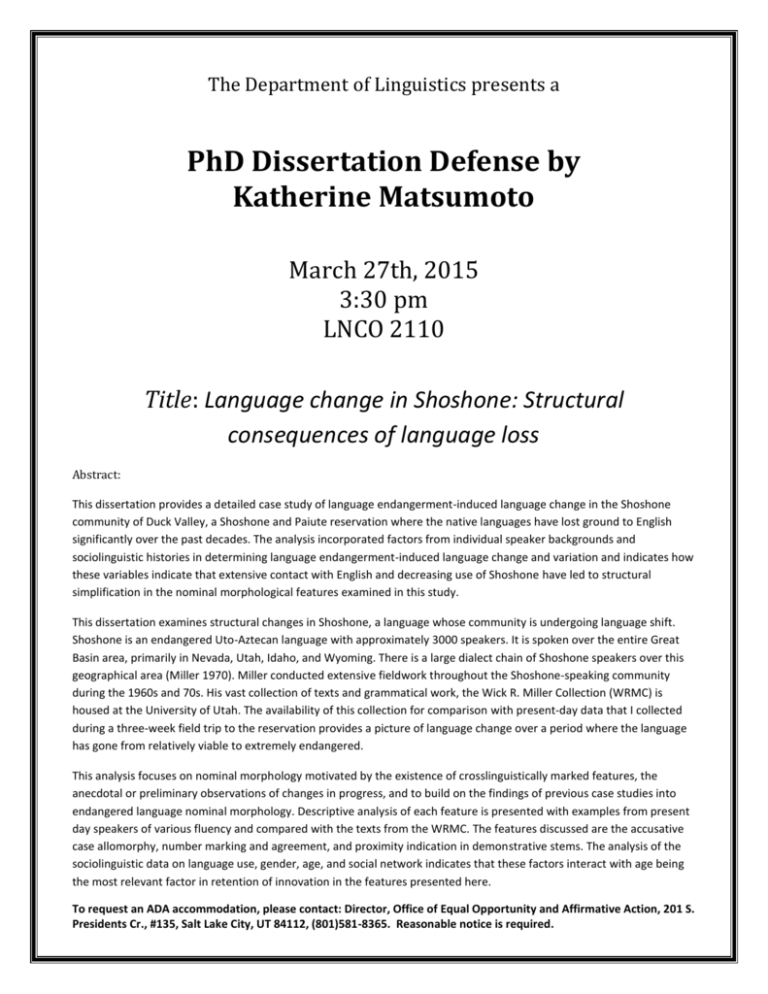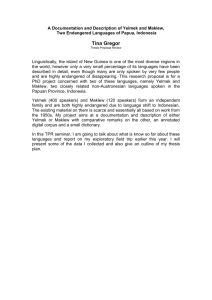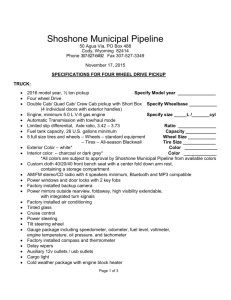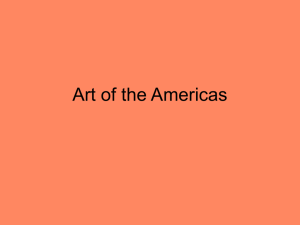PhD Dissertation Defense by Katherine Matsumoto
advertisement

The Department of Linguistics presents a PhD Dissertation Defense by Katherine Matsumoto March 27th, 2015 3:30 pm LNCO 2110 Title: Language change in Shoshone: Structural consequences of language loss Abstract: This dissertation provides a detailed case study of language endangerment-induced language change in the Shoshone community of Duck Valley, a Shoshone and Paiute reservation where the native languages have lost ground to English significantly over the past decades. The analysis incorporated factors from individual speaker backgrounds and sociolinguistic histories in determining language endangerment-induced language change and variation and indicates how these variables indicate that extensive contact with English and decreasing use of Shoshone have led to structural simplification in the nominal morphological features examined in this study. This dissertation examines structural changes in Shoshone, a language whose community is undergoing language shift. Shoshone is an endangered Uto-Aztecan language with approximately 3000 speakers. It is spoken over the entire Great Basin area, primarily in Nevada, Utah, Idaho, and Wyoming. There is a large dialect chain of Shoshone speakers over this geographical area (Miller 1970). Miller conducted extensive fieldwork throughout the Shoshone-speaking community during the 1960s and 70s. His vast collection of texts and grammatical work, the Wick R. Miller Collection (WRMC) is housed at the University of Utah. The availability of this collection for comparison with present-day data that I collected during a three-week field trip to the reservation provides a picture of language change over a period where the language has gone from relatively viable to extremely endangered. This analysis focuses on nominal morphology motivated by the existence of crosslinguistically marked features, the anecdotal or preliminary observations of changes in progress, and to build on the findings of previous case studies into endangered language nominal morphology. Descriptive analysis of each feature is presented with examples from present day speakers of various fluency and compared with the texts from the WRMC. The features discussed are the accusative case allomorphy, number marking and agreement, and proximity indication in demonstrative stems. The analysis of the sociolinguistic data on language use, gender, age, and social network indicates that these factors interact with age being the most relevant factor in retention of innovation in the features presented here. To request an ADA accommodation, please contact: Director, Office of Equal Opportunity and Affirmative Action, 201 S. Presidents Cr., #135, Salt Lake City, UT 84112, (801)581-8365. Reasonable notice is required. To request an ADA accommodation, please contact: Director, Office of Equal Opportunity and Affirmative Action, 201 S. Presidents Cr., #135, Salt Lake City, UT 84112, (801)581-8365. Reasonable notice is required.











